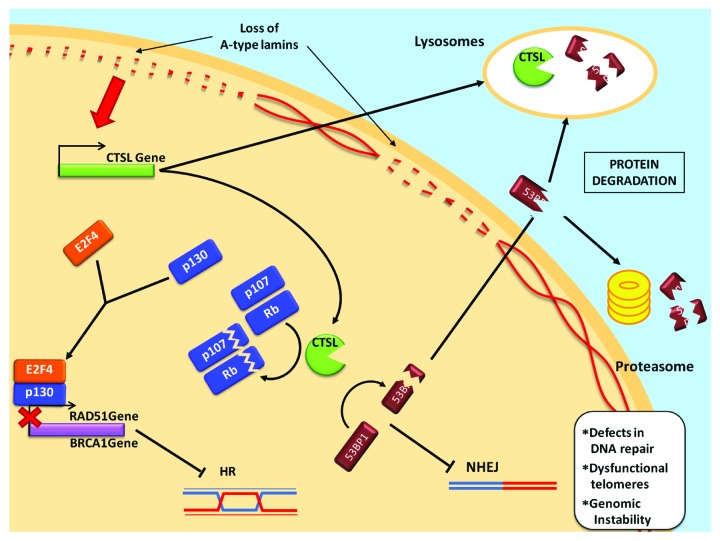Figure 3. Proposed model for the regulation of DNA repair mechanisms by A-type lamins. The loss of A-type lamins upregulates CTSL expression, resulting in elevated protein levels both in the nucleus and in the lysosomes. CTSL processes 53BP1, which then accumulates in the cytoplasm and is targeted to degradation by the lysosomal pathway and/or the proteasome. Loss of 53BP1 impairs DNA repair by NHEJ. On the other hand, CTSL degrades the pocket family proteins pRB and p107, favoring the formation of p130/E2F4 repression complexes, which in turn inhibit RAD51 and BRCA1 gene expression and thereby impair DNA repair by HR.

An official website of the United States government
Here's how you know
Official websites use .gov
A
.gov website belongs to an official
government organization in the United States.
Secure .gov websites use HTTPS
A lock (
) or https:// means you've safely
connected to the .gov website. Share sensitive
information only on official, secure websites.
